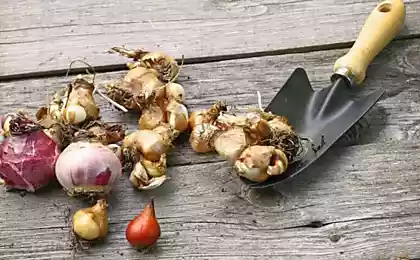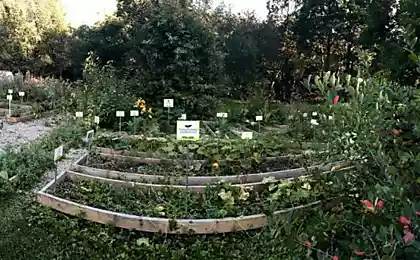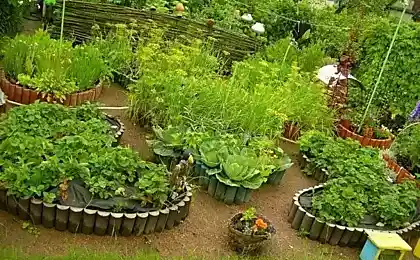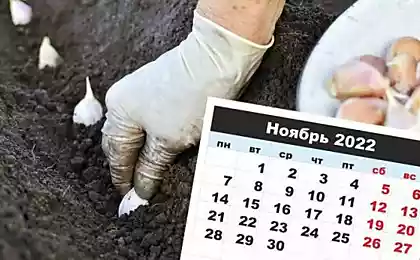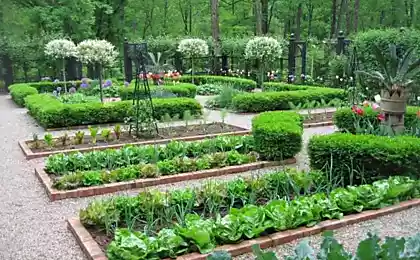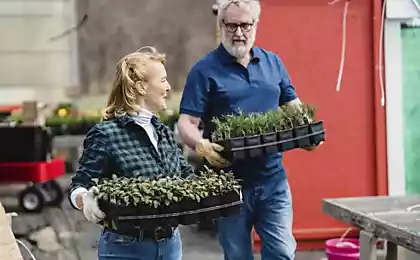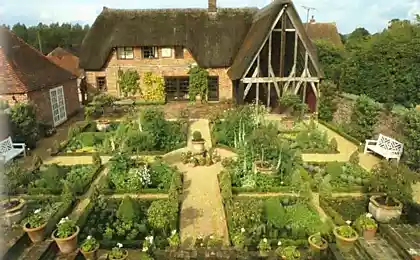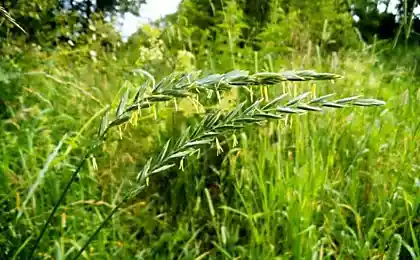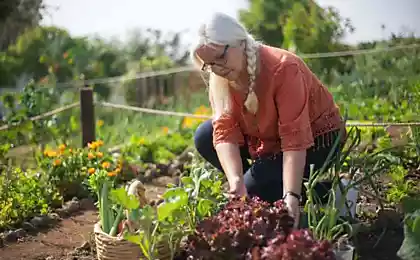687
What's next what to plant in the garden

Eggplant
It is recommended to plant beans among the Bush, scaring the Colorado potato beetle. A beneficial effect on eggplant has thyme.
Beans
The most favorable relationship that can be characterized as mutual support, exist between beans and cucumbers, So it is recommended to plant beans around the beds with cucumbers. They go well with sweet corn, potatoes, radishes. radish, spinach, mustard. Inclusion of beans in the planting of these crops improves their nitrogen nutrition. Fragrant Basil planted next to the beans, reduces damage by bean weevil. Other useful herbs to the beans: borage, lavender, marjoram, rosemary, yarrow. It is not recommended to plant beans with onions, leeks, chives and garlic. On the beans is bad neighborhood marigolds and wormwood.
Grapes.
In Moldova we have studied a number of cultivated plants in their work with grapes. A stimulating effect on the growth of grapes has provided corn, beans, rye, potatoes, radish, oil radish. The negative effect was observed in joint plantings with onions, barley, soy, cabbage. The incompatibility of grapes and cabbage known for a long time. Already in ancient Greece knew that cabbage is the enemy of the vine. This may seem surprising, because other plants of the cabbage family not so hostile to the grapes, and radishes and radish oil on the contrary, have a beneficial effect.
Peas.
Relationship of mutual support was observed in peas with carrots, turnips, cucumbers. It grows well between rows of crops, helping them in turn to the fact that, like all legumes, enrich soil with nitrogen, the Peas can be combined in the same bed with radish, radish, iceberg lettuce, kohlrabi, parsley. The adverse combination of peas with onions, garlic, tomatoes. Herbs on peas is bad wormwood. About the relationship between peas with potatoes and cabbage there are conflicting opinions: some authors believe these combinations are quite possible, others treat them negatively.
Cabbage.
For different types of cabbage is characterized by relatively similar preferences regarding accompanying plants.
Relationship of mutual support was observed in cabbage with Bush beans and celery. These types of a beneficial effect on each other, and celery, in addition, protects the cabbages from flea beetles. Dill planted between the rows of cabbage, improves its taste and deters caterpillars, aphids. Cabbage also has a positive neighborhood of borage, it is good for the cabbage and its tough fibrous leaves repels snails. Very good supporting crop for cabbage — all kinds of salad. They also protect her from fleas earthy.
Cabbage also needs to be protected from a variety of cabbage butterflies lay eggs on leaves. This role can perform aromatic herbs, its strong odor masking the smell of cabbage. So around planting cabbage it is recommended to plant thyme, sage, rosemary, mint, hyssop, wormwood, medicinal and chamomile. Leek deters caterpillars scoops. Cabbage can be combined in the same bed with cucumbers, tomatoes, spinach, beets, chard, potatoes, chicory. There is no consensus about the compatibility of it with strawberries and onions. All types of cabbage kohlrabi is the right partner for the beetroot and a bad neighbor for tomatoes. Cabbage does not mix well with parsley and suffers greatly from the close-growing grapes. Towards Kale is bad tansy.
Potatoes.
Beneficial potato cultivation in a mixed culture. It hurts less and may take longer to grow in one place without compromising the harvest. The perfect partners for potatoes — spinach, Bush beans and broad beans. Beans planted between the rows, enriches the soil with nitrogen and give. Potato goes well with cabbage, especially color and a kohlrabi, lettuces, corn, radishes. Many authors note that the beneficial effect of potatoes having a small number of plants horseradish planted at the corners of a potato plot. Colorado beetle scare Catnip, coriander, nasturtium, tansy, marigolds. It is not recommended to plant potatoes with celery, a depressing effect on potato have a sunflower and quinoa.
About the relationship of the potatoes, tomatoes, beets and peas, there are opposing views.
Strawberries.
Strawberries have a beneficial effect Bush beans, spinach, parsley. Parsley is recommended to be planted between the rows of strawberries to repel slugs. Strawberries can be combined with garlic, cabbage, lettuce, onions, radishes, turnips, beets. From herbs at her good borage (borage) and sage. Mulching of soil of spruce and pine needles contribute to a substantial improvement of strawberry flavor.
Corn.
Refers to the plants is very demanding to power supply, so the blocks of corn alternate with blocks of Bush beans; it benefits from the neighbourhood of this leguminous plant, after improver of the soil. Corn goes well with cucumbers, tomatoes, lettuce, beans, early potatoes. These cultures stimulate its growth. It is recommended that cucumbers be planted around the corn plots. From the point of view of allelopaty, corn is a very friendly herb for many cultures. It has a positive effect on sunflower, potatoes, grapes. Bad neighbors the celery and beetroot.
Bow.
The classic combination of onions and carrots. These two cultures protect each other from pests: carrot repels onion fly and onions carrot fly. Thanks to the compact form of onion used as an additional culture, which is placed between rows of the main crop. It goes well with beets, lettuce, cucumbers, strawberries, spinach, radish, watercress. About the combination of onion with the cabbage, there is no consensus. Some authors believe that the bow works well for cabbage and drives away pests. Edging out of the savory favorable for the growth of onions, chamomile is also good for him, but in small amounts: approximately one plant per 1 linear. m beds. Not onion combined with beans, peas, beans. For him, adversely to the neighborhood sage.
Leek.
Plant companions for leeks — celery, Bush beans, iceberg lettuce, carrots, beets. Leeks and celery into a relationship of mutual support, so it is recommended you plant them in alternating rows.
Perennial onions (chives).
Goes well with tomatoes, celery, lettuce, cabbage, carrots, strawberries, endivie, it is not recommended to be planted near peas, beans, beets.
Carrots.
Makes a good neighborhood many crops can grow well near onions and spinach, and goes well with tomatoes, radishes, turnips, chard, chives, garlic, salad. But the closest plant to carrots, with whom it has a mutual assistance is peas. Carrots it is recommended to surround the following crops to deter the carrot fly rosemary, sage, tobacco, onions. Hostile herbs — dill, anise.
Cucumbers.
For cucumber plants-satellites and curly Bush beans, celery, beets, lettuce, cabbage, garlic, onions, chives, radishes, spinach, fennel. The most beneficial effect on the cucumbers have beans, therefore it is advisable to plant beans around the plot with cucumbers. The cucumbers are planted around the maize, which benefits greatly from this neighborhood. Favorable for cucumbers herbs — chamomile, dill, borage. Not clear the question of the compatibility of cucumbers with tomatoes. Different authors Express this by the opposite opinion: some people think it's a good combination, others that it is absolutely impossible combination. So this question every gardener will have to find out yourself by experience.
Parsley.
Petrocanada plant-companion for many crops: asparagus, roses, celery, leeks, peas, tomatoes, radishes, strawberries, lettuce. It is recommended to plant at the edges of garden beds with tomatoes. Planted next to roses, it reduces the number of aphids; planted between rows of strawberries — repels slugs.
Pepper.
Plant-companion — Basil, hostile plant — fennel.
The radishes.
Rideshares brings mixed planting with tomatoes, spinach, parsley, chard, onions, garlic, cabbage, strawberries, peas Especially favorable for the combination of his radishes in the same row with leaf and iceberg lettuce, which protect it from fleas earthy. Radishes planted between Bush beans, has a particularly delicate flavor and large roots. Beans also protect the radishes from pests. Because radish seeds germinate quickly, it is recommended to sow them together with a slow-germinating crops (spinach, beet, carrots, parsnips) for marking rows. Radish does not like extreme heat, so it is often sown in alternating rows with the chervil, which is a bit obscure and it protects from overheating. Nasturtium and watercress bordering the beds with radish, improve the taste of radishes, giving the severity, and under the influence of lettuce, it acquires more delicate flavor. Unfavorable for radishes neighborhood of hyssop. Some gardeners believe that the cucumbers — bad neighbor to him.
Turnips.
Plant-companion — peas. Unfavourable to turnip, wild radish, mustard and knotweed (knotweed).
Salad.
Salitsilat iceberg and leaf (chives salad) goes well with most vegetable crops. He is a good companion for tomatoes, cucumbers, beans and curly Bush, chives, spinach, strawberries, peas. The neighborhood it is especially beneficial for vegetables of the cabbage family — all kinds of cabbage, radish, radish, as it repels dirt flea. But for him the most useful bow door, scaring aphids. Lettuce does not like overheating and needs partial shade, but only partial, so the close proximity of plants with dense foliage such as carrots, beets, unfavorable for the salad. Clumps of lettuce can be placed in different areas of the garden where it will grow under the cover of taller plants. Particularly beneficial for him the door of chrysanthemums.
Beet.
Hubmann, who for many years checked the compatibility of red beet with other vegetables, says that five types of vegetables — potatoes, tomatoes, Bush beans, beets and spinach — stimulate each other. According to his observations, beets. very good effect on cabbage of all kinds, lettuce, radish and radish, beetroot is especially beneficial to the neighborhood of onion, kohlrabi, spinach, lettuce, in addition, it tolerates a joint planting with garlic, cucumbers, strawberries, celery root.
Concerning the incompatibility beet with other crops, there is no consensus. Some gardeners argue that it does not grow in the vicinity of the chives, corn and potatoes. In respect of chard, which belongs to the same Botanical family as beets, there are also differences. One author claims that it favorably affects beets, other vegetables in this family can't stand root excretions each other and therefore can not be put next. There are suggestions that the root allocation of the beet has properties of antibiotics and therefore, its replanting some crops, in particular carrots, can provide the healing effect. But we should not forget about compliance with enough distance between the plants, as the powerful beet foliage obscures neighboring cultures.
Celery.
The celery and cabbage marked by relations of mutual assistance: cabbage stimulates the growth of celery and the celery repels cabbage from butterfly species of pierids. Celery goes well with tomatoes, spinach, cucumbers, lettuce, beets. Especially beneficial on it are chives and chrysanthemums beans, it is not recommended to plant celery near corn, potatoes, parsley, carrots.
Tomatoes.
Some consider tomatoes as "selfish" plants that love to grow by themselves, separately from other crops. But the experience of German and Swiss farmers said that the tomatoes well tolerate the neighborhood of other vegetables and quite suitable for mixed plantings. They combine well with celery, endivie, radish, radish, corn, lettuce, cabbage, garlic, carrots, beets. Marked by mutual positive effect with chives, spinach, Bush beans, parsley, which often planted as edging garden beds with tomatoes. Tomatoes have a hostile relationship with kohlrabi, fennel and dill.
With regard to the relationship of tomatoes and potatoes and cucumbers, here opinions differ, it may depend on the method of planting. Favourable for tomatoes the next following herbs that improve their taste and condition: Basil, lemon balm, borage, chives, marigolds, mint, sage, savory. Dioica nettle growing next to the tomatoes, improves the quality of tomato juice and prolongs the shelf life of the fruit.
Pumpkin.
Wells with pumpkin suggest to place between the maize plants. The corn shades the pumpkin in the hot season and saves her from overheating.
Beans.
Beans Bush — the most friendly plant from vegetables of the legume family. Forms of mutual support and mutual stimulation observed for beans and radishes, all kinds of cabbage, corn, celery, cucumbers, potatoes, tomatoes, beets, spinach. Root secretions rich in nitrogen, helps beans growing near the vegetables of other types. In addition, it is compatible with chard, lettuce, strawberries, leeks. Beans do not tolerate the neighborhood of onion, garlic, fennel, peas. From herbs to beans recommend the savory, which protects it against black aphids.
Garlic.
It is known that garlic goes well with tomatoes, beets, carrots, cucumbers, strawberries and bad for beans, peas, cabbage.
Spinach.
Spinach — a favorite in Germany and Switzerland member of the vegetable community. He is credited with many positive qualities, including cold, short period of maturation, compact form. All this makes it very convenient crop for consistent and combined landings. In addition, the roots of the spinach beneficial effect on soil properties, but the saponin included in the composition of root excretions, stimulates the absorption of nutrients by the roots growing around him vegetables. Relationships of mutual favorable effects observed for spinach and potatoes, tomatoes, beans, beets. The most frequent combination — spinach, kohlrabi, radishes, salad. It also goes well with carrots, onions, parsley, watercress, celery, cabbage, strawberries. With any type of plant from the spinach, no hostile relations.
All of the advice on methods of growing vegetables should be taken as guidelines, not as rigid rules. Every grower should check them on the site with the available varieties to suit local conditions.
Described methods involve effective use of the entire area of the garden throughout the summer season. With this method of cultivation a plot of 100 m2 can feed a family of four.
We should mention one more important advice from more experienced gardeners. It concerns the provision of an annual planting plan. He needed to, firstly, observe the correct sequence of crops from year to year in accordance with the rules described above rotation, and secondly, to plan podseti and replanting the same crops to others in the beginning of the year. It's difficult to remember and keep in mind, especially when a large variety of crops, therefore, the plan map of the garden is absolutely necessary.published
Source: www.pervorod.ru/blogs/eto-interesno/chto-ryadom-s-chem-sazhat-v-ogorode


